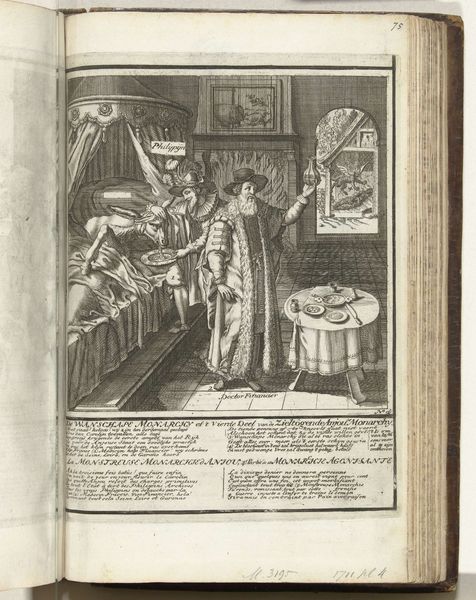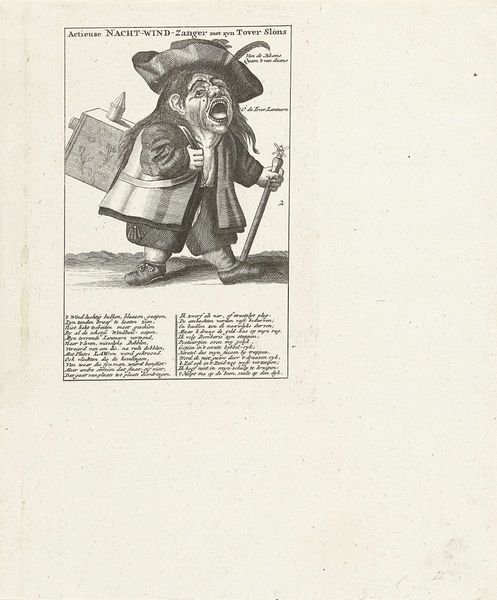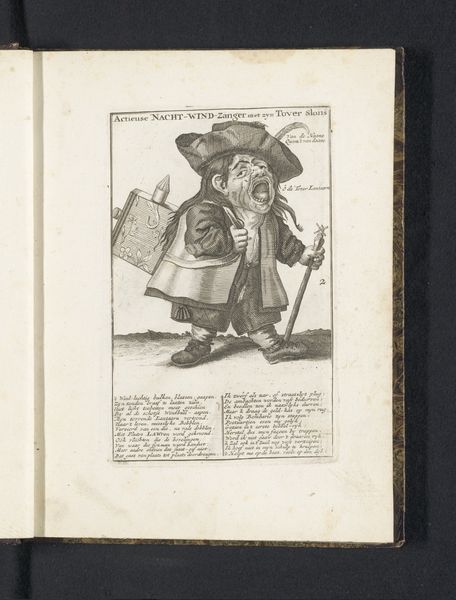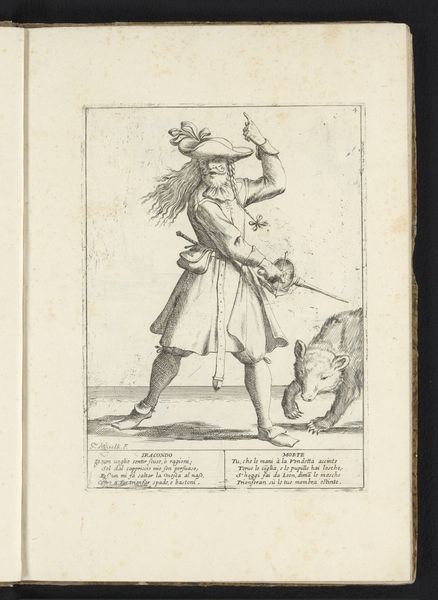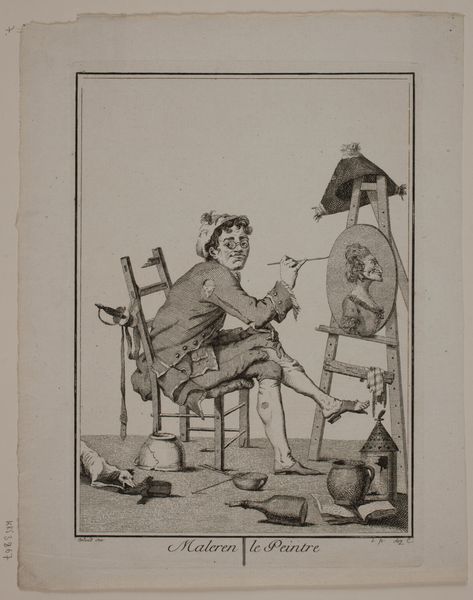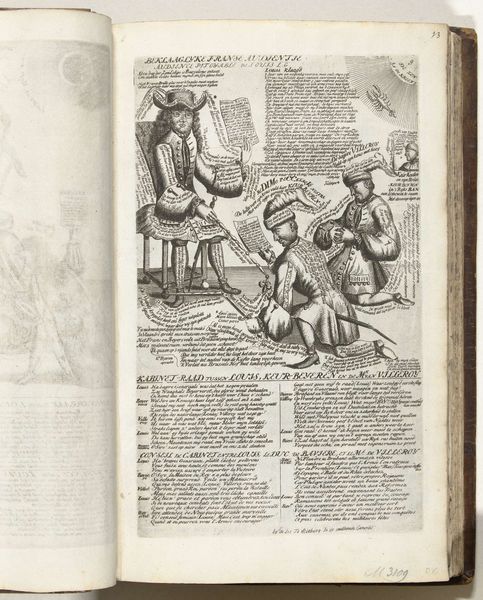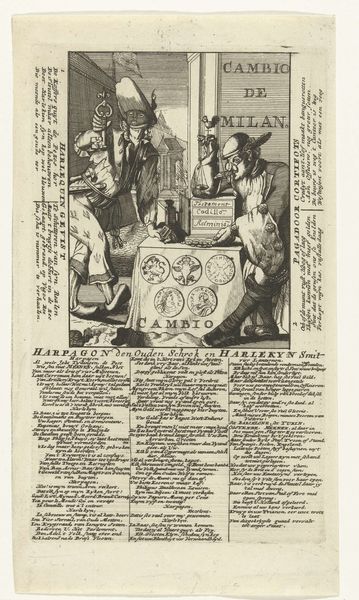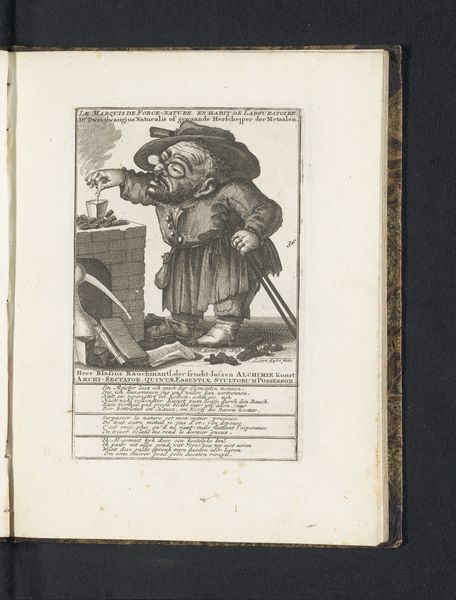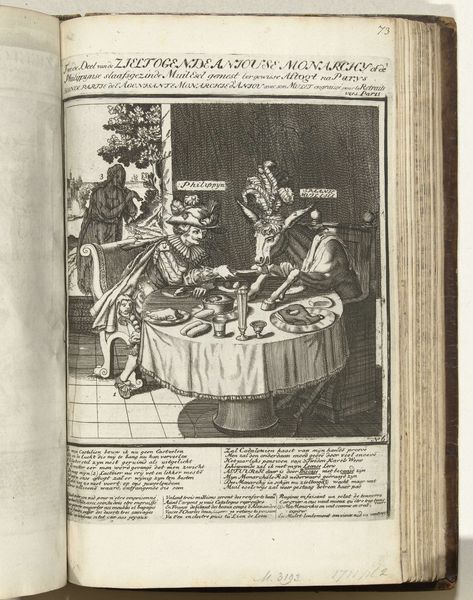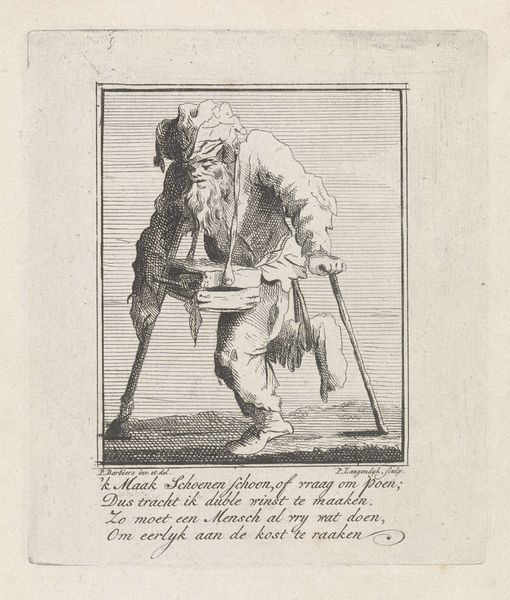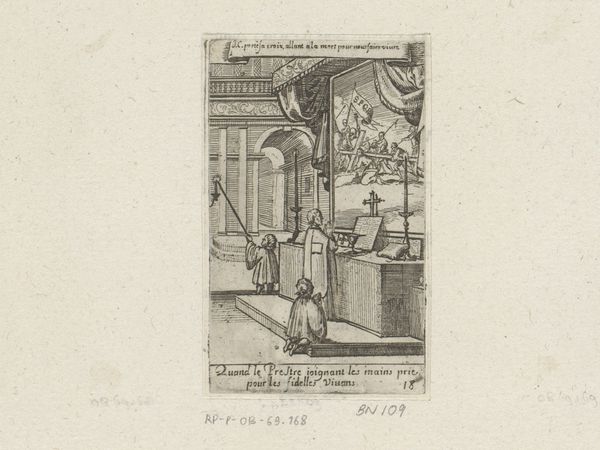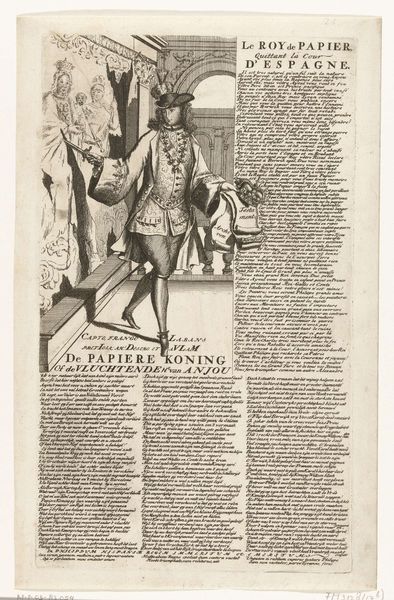
print, engraving
caricature
history-painting
engraving
Dimensions: height 315 mm, width 200 mm
Copyright: Rijks Museum: Open Domain
This engraving, made in 1705 by an anonymous artist, presents a satirical view of Louis William, Margrave of Baden-Baden. It’s a print, which means the image was incised into a metal plate, likely copper, with tools like burins and scrapers. The plate would then have been inked and pressed onto paper, allowing for mass production and wide distribution of the satirical message. This very act of printmaking is crucial to the work's meaning, enabling the swift dissemination of political commentary during a time of conflict. The sharp lines and contrasting tones achieved through engraving lend a sense of immediacy to the caricature. The use of printed text embedded in the image further amplifies its message, with labels and captions directing the viewer's interpretation. The artist uses wordplay and symbolism to criticize Louis William's military performance and alleged financial motivations, as he is portrayed surrounded by money bags and mocked as a 'Knight of the Golden Louis'. By understanding the printmaking process and the social context in which it was produced, we gain a deeper appreciation for the artwork's intended effect.
Comments
No comments
Be the first to comment and join the conversation on the ultimate creative platform.
